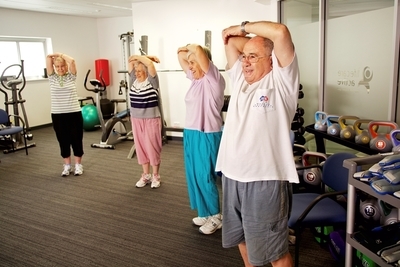4 Big Benefits of Exercise
Published: 21 Apr 2015
The benefits of exercise are far greater than just burning calories from a recent indulgence. In fact, the many reasons to exercise include reducing inflammation from arthritis and related conditions, reducing the risk of other chronic diseases and easing joint pain. Four studies provide even more reasons to exercise.
1. Exercise keeps you young. Researchers don’t know yet exactly what causes aging, but inflammation certainly is involved. A study of healthy men aged 65 to 74 concluded that the more physically fit and active you are, the fewer inflammatory chemicals your cells produce. Researchers from the Human Performance Laboratory at Ball State University in Muncie, Ind., suggest that because exercise controls inflammatory chemicals, it may help reduce the decline in function associated with aging.
2. Exercise improves endurance and heart health. Inflammatory conditions such as arthritis are associated with an increased risk of heart disease, because inflammation that affects joints affects arteries, too, increasing blood pressure. Movement gets your blood flowing, increasing endurance and improving cardiovascular health. You can reap the benefits of exercise even if you’re not doing high-intensity aerobics. University of Pennsylvania researchers found that moving enough to increase blood flow stimulates an anti-inflammatory response in the cells of blood vessels, helping to keep arteries open.
3. Two important reasons to exercise: arthritis and diabetes. The same inflammatory chemicals associated with rheumatoid arthritis (RA) and lupus can block insulin receptors, making cells resist the beneficial effects of insulin. This condition of insulin resistance can progress to diabetes. A recent study shows exercise not only decreases levels of inflammatory chemicals but also increases the amount of insulin and glucose the body uses, rather than stores, by 16 percent. Reducing inflammation, as through exercising, may reduce your joint pain, as well as your risk of developing diabetes.
4. Exercise, not just counting calories, counts. Cutting calories can help you lose weight, but it also can slow down your metabolism. Increasing your activity level along with cutting calories is a smart way to lose weight. Some people try only cutting calories, but a study of obese postmenopausal women by researchers at Wake Forest University in Winston-Salem, N.C., showed that while diet alone for six months decreased the total amount of abdominal fat, it did not decrease the levels of inflammatory compounds the way exercise did. To decrease inflammation and boost metabolism, you need the two-pronged approach of exercise and diet.
Article courtesy of Arthritis Foundation.
